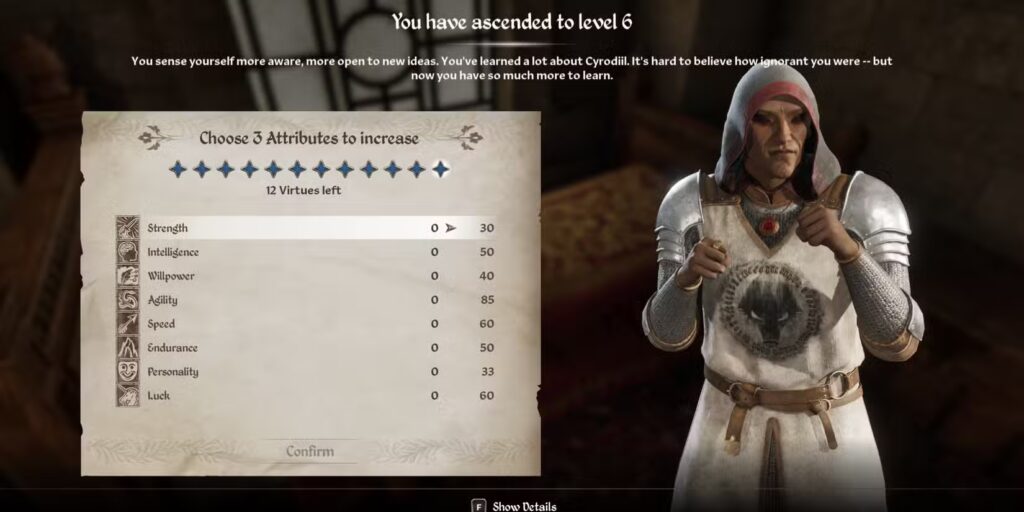Wondering how level scaling works in Oblivion Remastered? Here’s everything you need to know about how enemies, loot, and gear scale with your character’s level.
Oblivion Remastered: Level Scaling Explained
While Oblivion Remastered brings plenty of upgrades and polish to the classic 2006 RPG, some core systems—like level scaling—are still very much intact. For better or worse, this mechanic continues to play a major role in how you experience combat, loot, and progression.
This guide breaks down exactly how level scaling works in Oblivion Remastered, how it compares to the original version, and what it means for your character’s growth.
Does Oblivion Remastered Have Level Scaling?
Yes, it absolutely does. Just like in the original Oblivion, level scaling in the remaster affects:
- Enemies
- Loot
- Certain minigames (like Lockpicking)

The good news is the remastered version smooths things out a bit thanks to revamped XP mechanics. In the original, you only gained character levels by raising Major Skills. But now? Both Major and Minor Skills contribute to XP, meaning you’re free to play however you want—without slowing your level progression.
How Level Scaling Works in Oblivion Remastered
Here’s the core idea: the world of Oblivion Remastered grows with you.
- At Level 1, you’ll face low-tier enemies like Bandits in fur armor using basic weapons.
- At Level 20, you might run into those same Bandits—but now they’re rocking Glass or Ebony gear and casting powerful spells.
That same principle applies to:
- Containers: Chests, crates, and other loot sources scale their contents to your level.
- Enchanted items: More powerful and rare enchantments become available at higher levels.
- Gold & gems: More valuable rewards appear as you progress.
- Unique gear: Certain weapons or armor will only show up (or improve) once you’ve hit the required level.
⚠️ Don’t be surprised if the game still feels hard at higher levels. Enemies grow with you—but so do your tools to handle them.

️ How Equipment Scaling Works
Equipment in Oblivion Remastered follows a level band system, meaning it upgrades at specific level thresholds. Typically, that’s every 3–5 levels.
Examples:
- Umbra
- At Level 1: Deals ~10 damage.
- At Level 20: Deals ~16 damage and may have stronger enchantments.
- At Level 1: Deals ~10 damage.
- Shadowhunt Bow
- At Level 1: Deals 3 points of Health and Magicka damage.
- At Level 5+: Jumps up to 7 points each, in addition to Turn Undead and Weakness to Poison.
- At Level 1: Deals 3 points of Health and Magicka damage.
This banded upgrade system means that when you pick up certain gear matters. Some players purposely delay grabbing unique weapons until they’re higher level to get the stronger version.
Level Scaling Compared to Other Elder Scrolls Games
| Game | Scaling Style |
| Morrowind | No scaling. Enemies/loot are fixed. |
| Oblivion | Everything scales with your level. |
| Skyrim | Limited scaling in level bands. |
Oblivion Remastered sticks close to the original system, meaning nearly every element in the world—enemy difficulty, loot quality, and encounter balance—will shift to match your current level.
✅ Final Tips
- Don’t overlevel too fast without improving combat skills—stronger enemies can overwhelm you.
- Time your loot pickups—wait until higher levels to grab major rewards like Umbra or Shadowhunt if you want the better versions.
- Explore freely now that Minor Skills contribute to level progression. You can level up your character without being locked into a strict class build.
Related Article:
- Oblivion Remastered: A Watery Grave Quest Walkthrough
- The Lonely Wanderer Quest Walkthrough – Oblivion Remastered (Dark Brotherhood)
- Oblivion Remastered: Full Achievement & Trophy Guide (Including Shivering Isles DLC)
- Canvas the Castle Quest Walkthrough – Oblivion Remastered
Follow us for more Games Guides